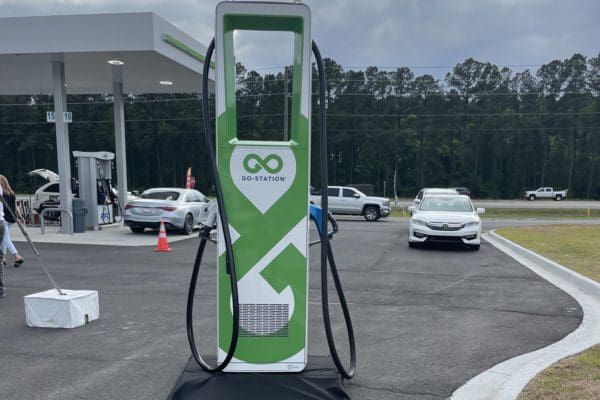The California Air Resources Board’s (CARB) Advanced Clean Fleets (ACF) Rule will accelerate the adoption of zero-emission vehicles (ZEVs) across much of California’s commercial transportation industry. The ACF rule requires fleets to transition all their medium- and heavy-duty vehicles operating in California to ZEVs.
ACF became law on October 1, 2023, with initial compliance and reporting dates phasing in for certain fleets on December 31, 2023.

Pathways to Compliance
The ACF Rule impacts public fleets, private fleets, drayage vehicles, brokerages, and companies that contract with third-party fleets.
The ACF rule splits California’s medium- and heavy-duty fleets into three categories: High Priority and Federal Fleets, Drayage Fleets, and State and Local Government Fleets. Each group has its own applicability criteria, compliance requirements, and implementation schedules that differ by fleet type.
Larger organizations and federal fleets, described as “High Priority” in the regulation, have the options to either: only buy ZEVs as of January 1, 2024, or to gradually increase the number of zero-emission vehicles in their fleets. Fleets that decide on the gradual turnover must meet their vehicle group requirements by January 1 of each year.
| Vehicle Group Turnover Requirements | 10% | 25% | 50% | 75% | 100% |
|---|---|---|---|---|---|
| Vans, box trucks, two-axle buses, yard tractors | 2025 | 2028 | 2031 | 2033 | 2035 |
| Work trucks, day cab tractors, three-axle buses | 2027 | 2030 | 2033 | 2036 | 2039 |
| Sleeper cabs tractors and specialty vehicles | 2030 | 2033 | 2036 | 2039 | 2042 |
Drayage vehicles that enter regulated ports or railyards can add only zero-emission vehicles to their operations, starting January 1, 2024. However, existing vehicles can continue with drayage if they register with CARB by December 31, 2023 and continue to meet certain requirements until the end of their “useful life.”
| Useful Life Benchmarks for Drayage Trucks | |||||
|---|---|---|---|---|---|
| Engine MY | Vehicle MY | Date Engine Will Exceed 13 Years | Date Engine Will Exceed 18 Years | Truck Must Be Removed from Drayage By (or sooner) | |
| 2010 | 2011 | 2023 | 2028 | 2028 | |
| 2011 | 2012 | 2024 | 2029 | 2029 | |
| 2012 | 2013 | 2025 | 2030 | 2030 | |
| 2013 | 2014 | 2026 | 2031 | 2031 | |
| 2014 | 2015 | 2027 | 2032 | 2032 | |
| 2015 | 2016 | 2028 | 2033 | 2033 | |
| 2016 | 2017 | 2029 | 2034 | 2034 | |
| 2017 | 2018 | 2030 | 2035 | 2035 | |
| 2018 | 2019 | 2031 | 2036 | 2035 | |
| 2019 | 2020 | 2032 | 2037 | 2035 | |
| 2020 | 2021 | 2033 | 2038 | 2035 | |
| 2021 | 2022 | 2034 | 2039 | 2035 | |
| 2022 | 2023 | 2035 | 2040 | 2035 | |
| 2023 | 2024 | 2036 | 2041 | 2035 | |
Does ACF Apply to My Fleet?
If you’re unsure whether the new Advanced Clean Fleets Rule applies to your fleet, answer the questions in the chart below to determine your next steps.
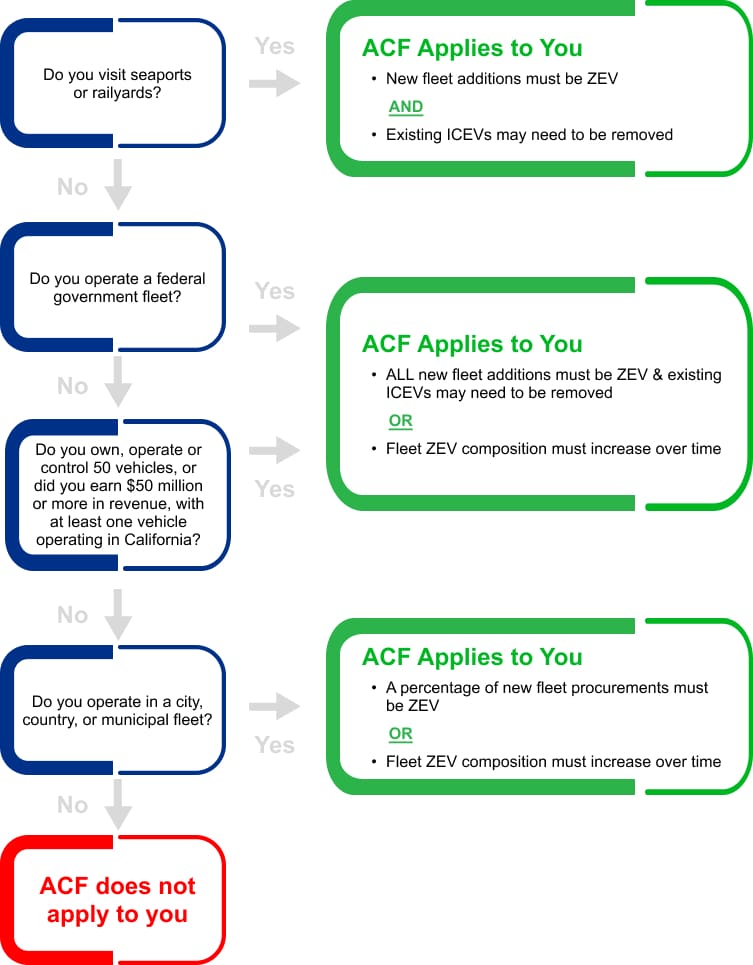

What Are Your Next Steps?
- Meet all required upcoming reporting deadlines:
- Drayage Internal Combustion Vehicles: December 31, 2023
- High Priority and Federal Fleets: February 1, 2024
- State and Local Government Fleets: April 1, 2024
- Determine your fleet’s requirements.
- Contact your utility to begin understanding the infrastructure process as soon as possible.
- Discuss vehicle options with your OEM and/or leasing partners to determine the best ACF-compliant solutions for your fleet.
- Coordinate with key internal stakeholders (ex: operations, finance, maintenance, facilities, real estate, executive management, etc.) for vehicle acquisition, infrastructure, and capital planning.
- Document and save everything, especially if it’s related to exemptions and extensions to the rule.
Start the Conversation
Let’s connect to discuss how GNA can help you achieve your goals.
Related News
To learn more about how GNA can support you with these services, read our related articles and insights from the GNA team below.
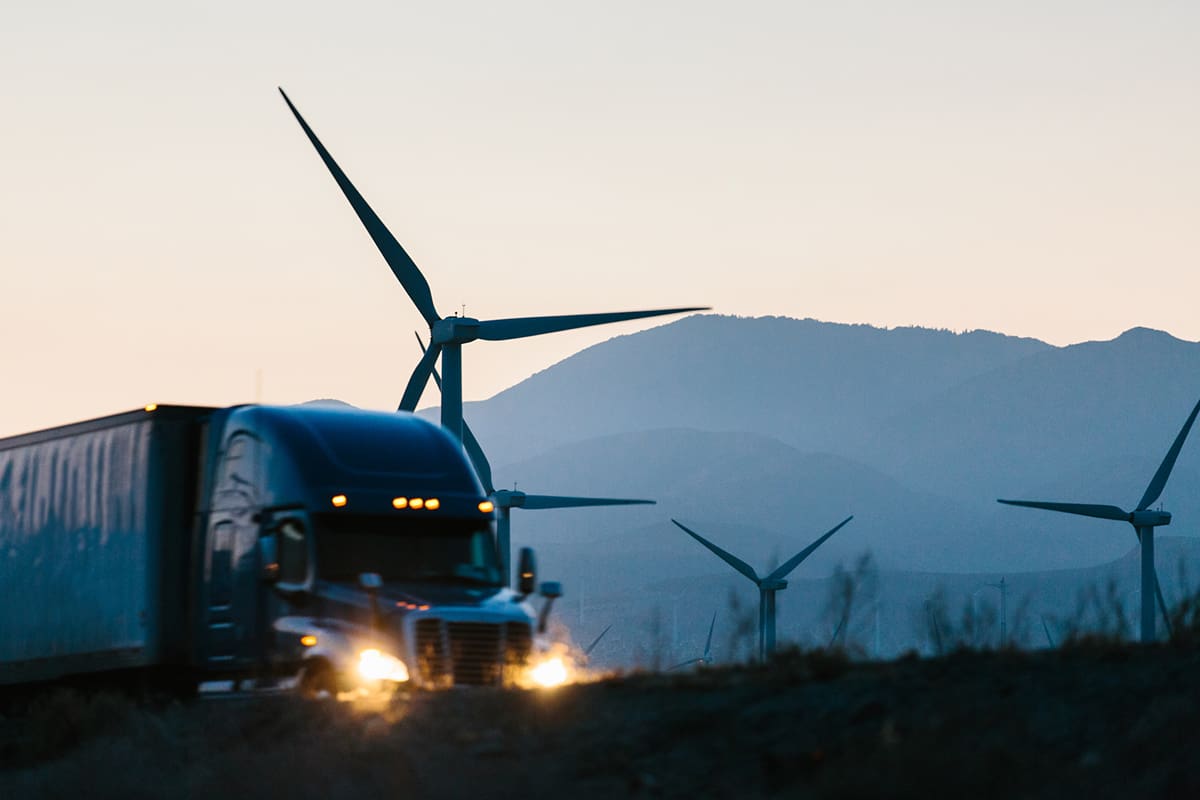
Championing the Crucial Dialogue to Advance Fleet Electrification
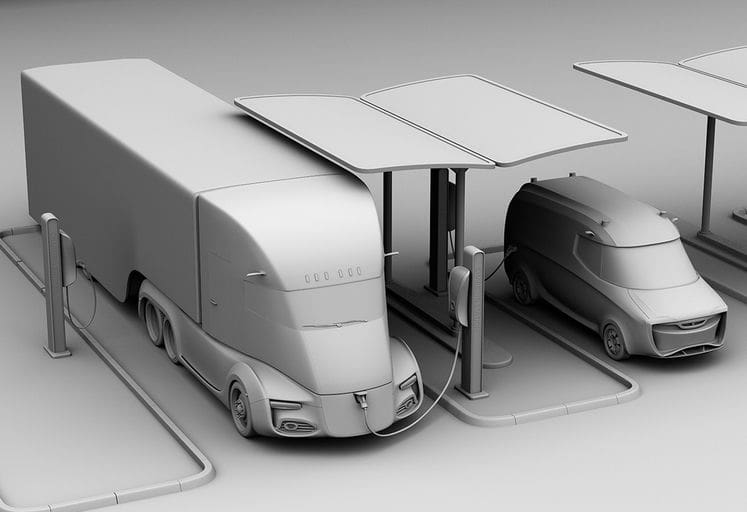
California’s electric truck mandates pose challenges—and opportunities—for small fleets
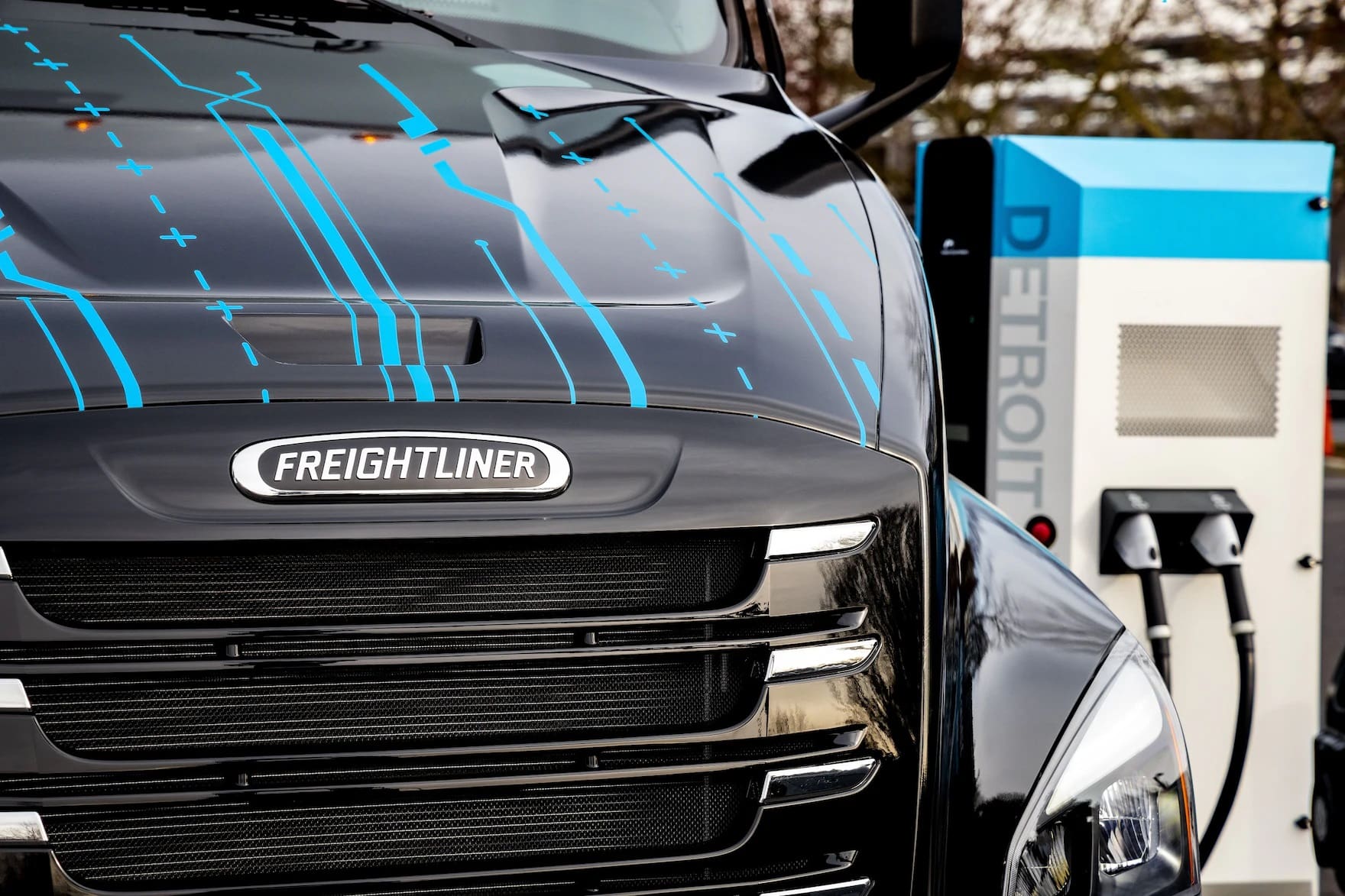
Electric-truck purchase incentives present big challenges for small fleets, owner-operators
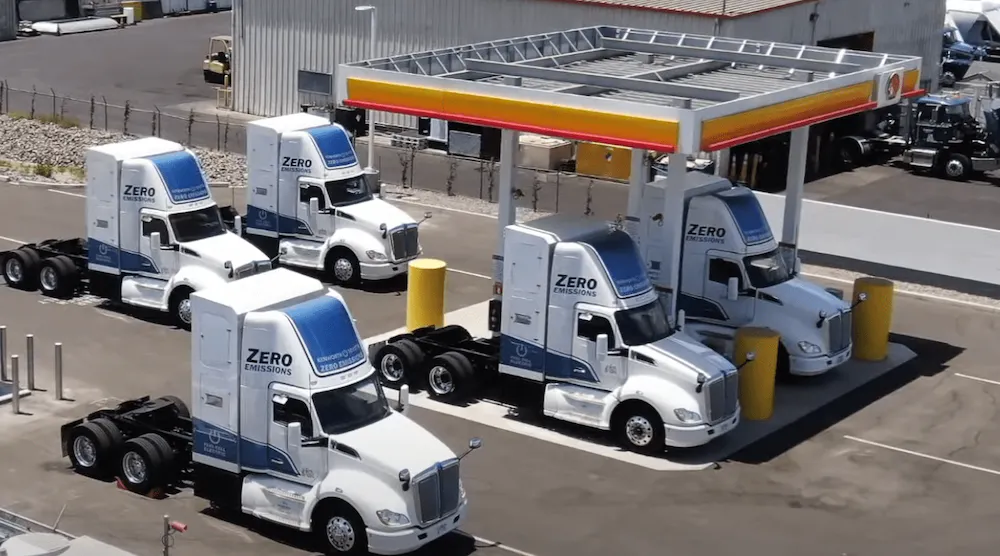
Feds fueling $8B nationwide hydrogen hub investment
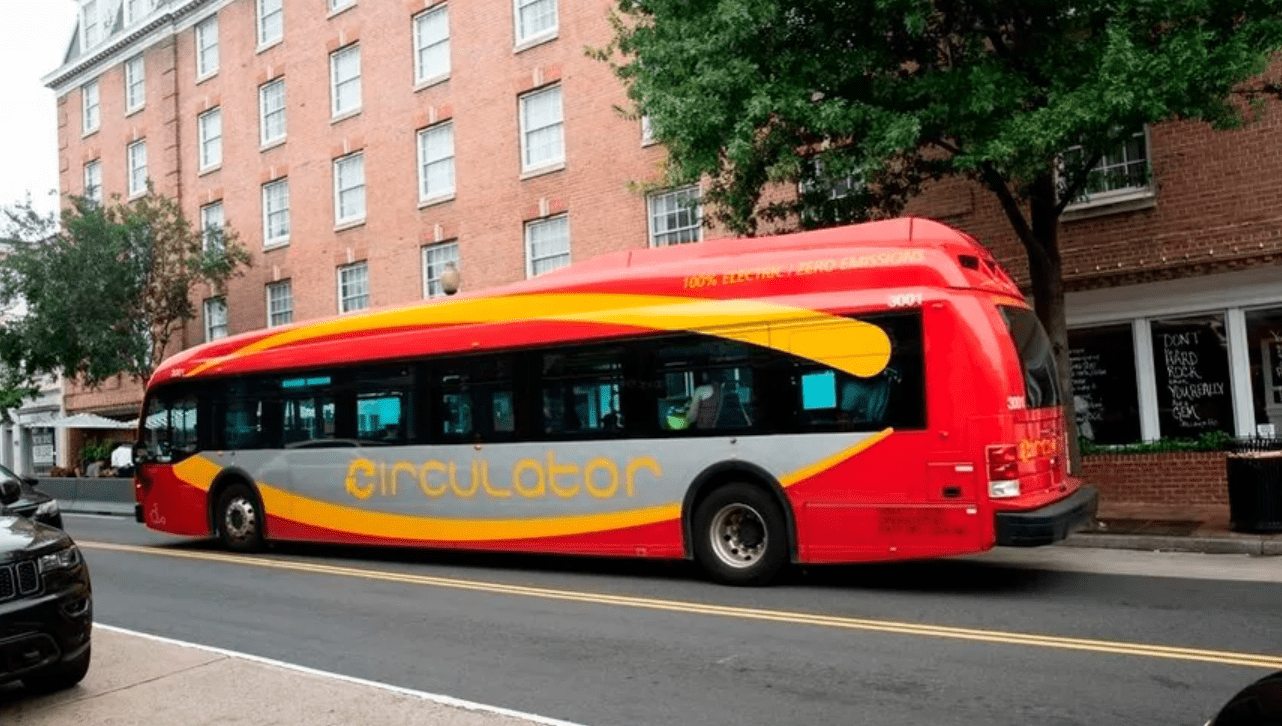
The US’ Billion-dollar EV Bus Program Can’t Keep up With Demand
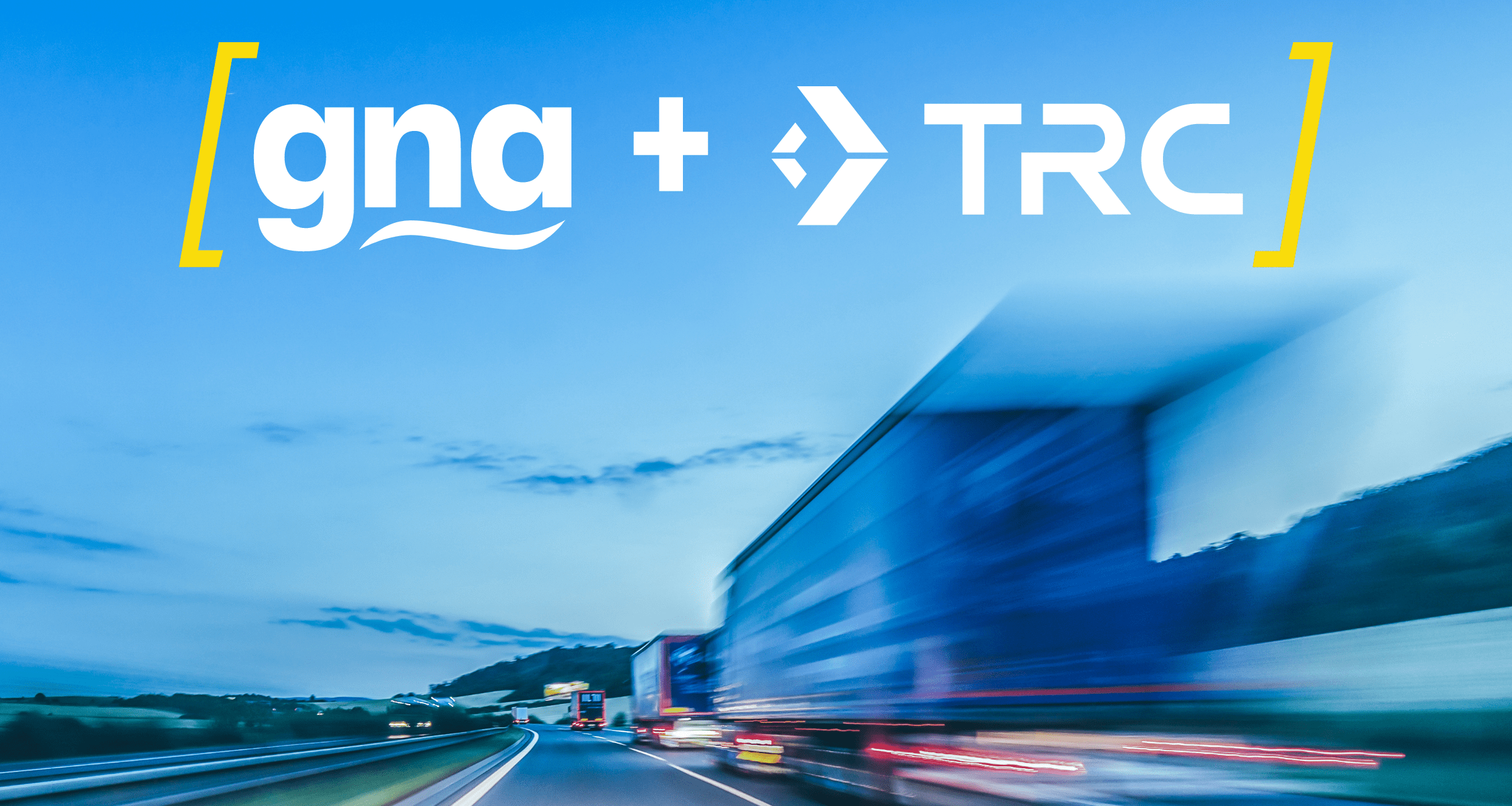
GNA Acquired by TRC, Expanding Sustainable Transportation Solutions for Clients
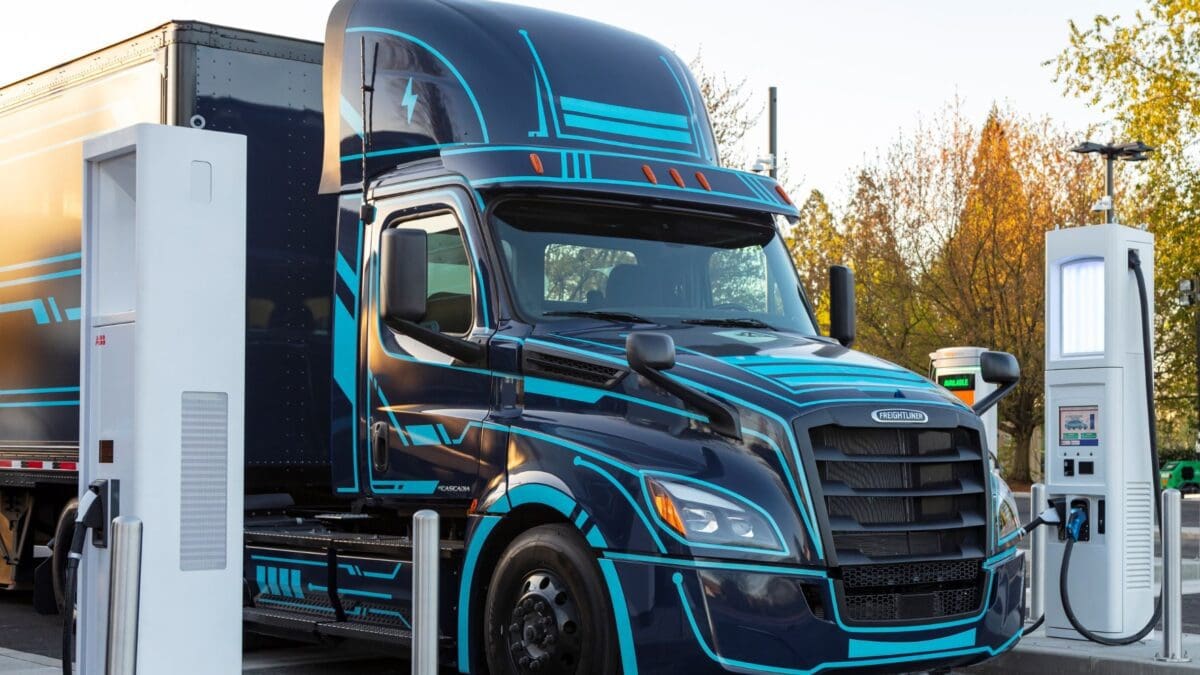
Electric truck incentives plentiful today but won’t last forever
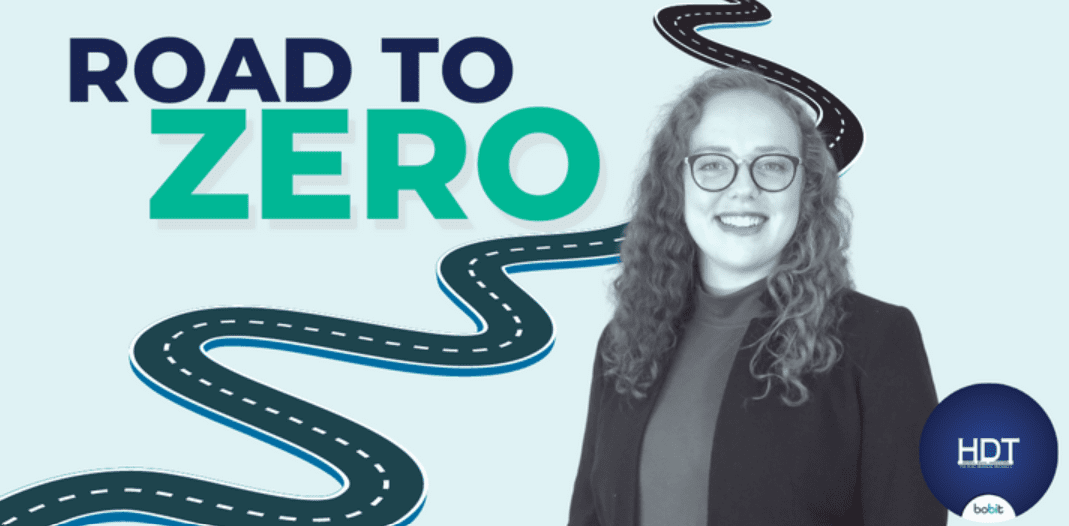
Cavalcade of Clean Transportation Funding Continues
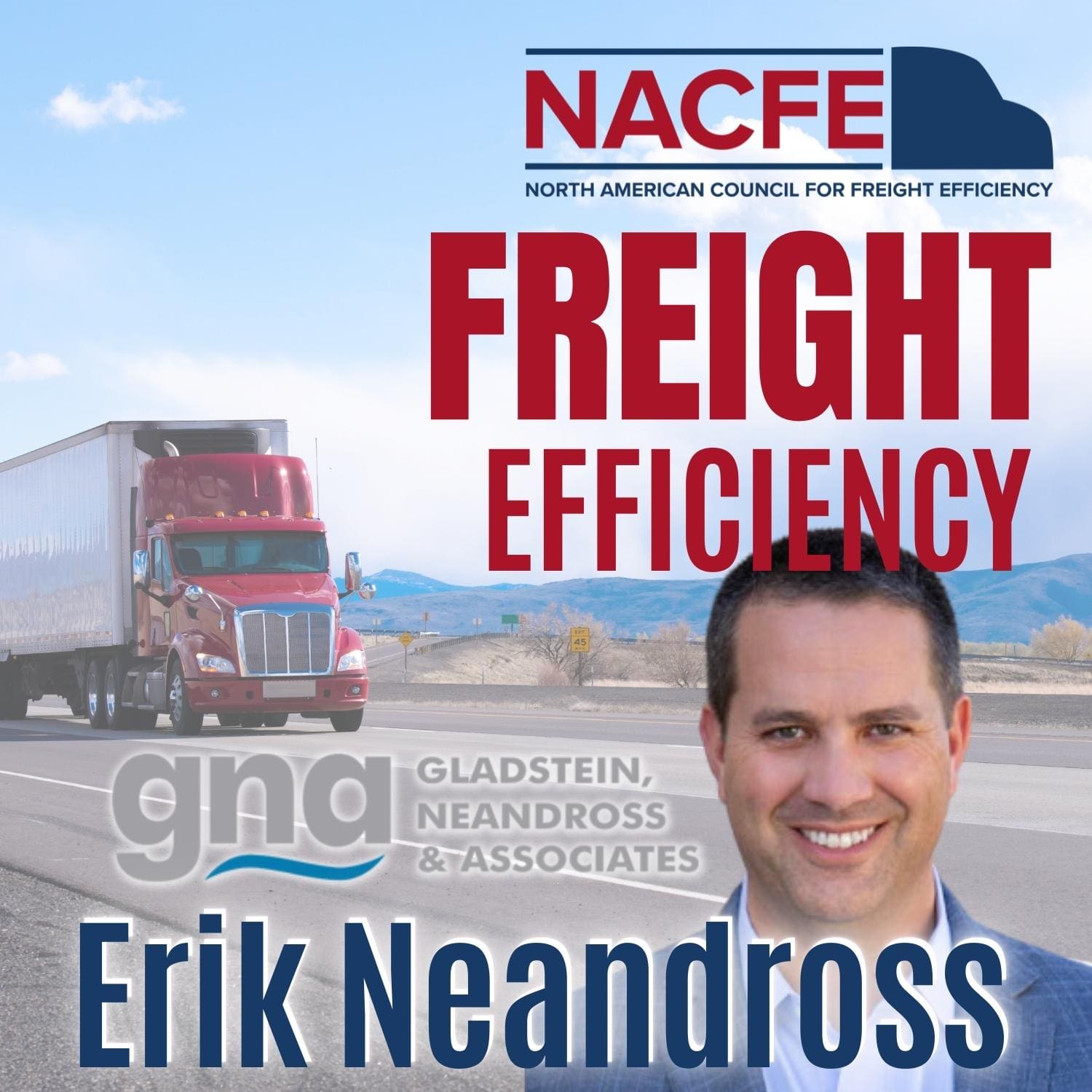
NACFE Podcast: GNA CEO Navigates the Future of Fleet Sustainability
